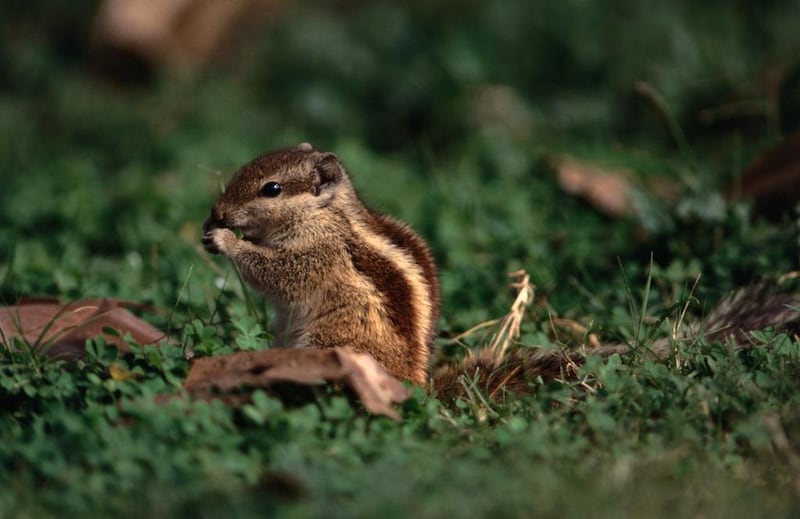ABU DHABI // First spotted in Ras Al Khaimah in 2009, the five-striped palm squirrel has made its way to pretty much every corner of the Emirates, a study found.
The small rodent, which is native to South Asia and Iran, was first sighted in the Hamraniyah area of Ras Al Khaimah.
It has now also been seen in Abu Dhabi city, Samha, Dubai, Sharjah, Ajman and Al Dhaid, and even as far as Kalba, Fujairah and Dibba, on the east coast, according to the study published in the local natural history journal Tribulus.
They have also been spotted on the Omani side of Dibba.
The palm squirrel is very adaptable and is present in areas ranging from forests and high-altitude mountainous terrain to scrublands, arable land and urban areas.
In India, it is quite common even in large cities such as Delhi and Kolkata.
The squirrels have also been spotted in high numbers in some areas – for example, about 50 were spotted in Sharjah National Park in July last year – indicating that they are breeding successfully.
The authors of the study said that the presence of the species could prove problematic.
"Cute as they may be, they clearly have the potential to become pests, as they have done in Australia," said Dr Jacky Judas, manager and scientific adviser for terrestrial biodiversity at the Emirates Wildlife Society – Worldwide Fund for Nature, and Peter Hellyer, a historian, author and columnist for The National, who has been studying UAE wildlife for more than 30 years.
The National Vertebrate Pests Committee in Australia said the species posed “an extreme threat” as a potential pest species. In India, its home territory, the species is considered a problem to fruit crops, and they also eat birds’ eggs.
“Given the apparent recent and fast spread of the species in the UAE, it is likely the population will continue to grow,” the authors said. “It is likely they are much more numerous and present in many other areas.”
The authors recommend monitoring the squirrel population in terms of numbers, distribution and diet.
“The fact this species has established a self-sustaining population over a period of only a few years highlights the need to record all observations of alien non-native species and to maintain them in a centralised national biodiversity database,” Dr Judas said.
He said the spread of a non--native species that starts to do damage can be extremely difficult and costly to remove.
He is working to establish an open-access database of sightings of mammal species in the Emirates, both native and introduced.
The authors collected their data from records provided by birdwatchers through the UAE Birding website.
newsdesk@thenational.ae
*with reporting from Wam






